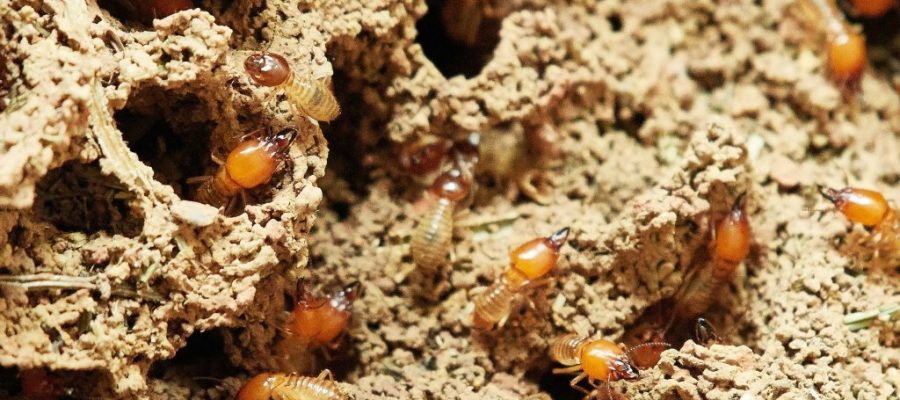What Attracts Termites to Your House?
- July 23, 2019
- in Pest Control
- by Ashley Dando
- 112
- 0

Is your dream home a romantic gabled cottage? A traditional Queenslander style? Or perhaps Post-War Austere is more your thing. The unique culture of Australia creates its own language of homes and comfort.
The rich traditions of Australian homes draw on influences from the United Kingdom, Europe and somewhat improbably, California, U.S.A. Climate matters and tradition influence the choice of building materials.
Architecture may attract your eye, but did you know that termites are looking for more than style when they choose a home to attack? What attracts termites may surprise you.
Read on to learn more.
Here in Queensland, our most serious termite pest is the subterranean termite. Australia is home to several different types of termites, and they can be plenty serious, but it is the subterranean termite that causes the most damage.
Subterranean termites are so-named because of their connection to the soil. There are several termite subspecies. Coptotermes, Schedorhinotermes, Microcerotermes, Nasutitermes, Mastotermes are just a few.
These termites live underground where they manage a stable high humidity environment. From there, they forage widely for damp and rotting wood. In fact, the Great Northern Termite might build a tunnel 200 metres long to reach its source of cellulose.
Some termites build huge mounds for their nests, while others prefer less centralized headquarters. They build mud tubes from these nests often for metres, to protect themselves from predators and dry air.
Just like home buyers out with an estate agent look for curb appeal, so do termites. The #1 thing subterranean termites look for is is soil to wood contact. Here in Australia, homes are built with this in mind.
For a new home, the soil is trenched out and treated, metal flashings are installed, etc. However, this kind of protection won’t last forever. Any wood in direct contact with the ground is susceptible to termite attack.
Many homeowners create conditions that welcome termite infestations. Some common home maintenance practices are especially inviting. Subterranean termites are especially destructive, once established. It’s important to not lay out the welcome mat and tea table.
Subterranean termites don’t go out into the open air to attack your home. They have to travel underground or build sheltered mud tubes to reach your delicious wood. Situations around the house and garden that attract hungry foragers include things like:
Almost all termite infestations to homes are related to wood that in contact with soil. Happy termites need not build mud tubes to travel to this food source. They just burrow directly into the wood, completely undetected.
Watch for wood siding, lattices, firewood, steps, etc. that touch your home and the ground. Dead trees or stumps close to your foundation are also suspect. If you have wood around exterior doors or basement windows, termites can find their way in.
Solid, dry wood has little appeal to termites if soft or rotted wood is available. In fact, if the humidity levels are high enough, termites can move right in, no soil cover necessary. Australian subterranean termites prefer soft, damp wood.
Roof leaks or prolonged appliance and plumbing leaks can raise moisture levels high enough to create termite-friendly softened wood anywhere in your home. All it takes is a forager or two to find a way in. From there, destruction takes very little time.
If you find leaks, excessive condensation or humidity, it is vital that you correct the causes. For example, poor drainage, damaged downspouts, dripping appliances, leaky skylights and windows, etc. Don’t forget irrigation, mulch or foundation plants and poor slope.
Correct the conditions and replace the damp wood as soon as possible to avoid infestations. Subterranean termites move slowly above ground but are very fast when protected from drying air.
Maintain your garden around the foundation of your home. Do not allow soil to build up near your stucco or siding. Try to maintain a vertical clearance of at least 15 cm between the soil or mulch and your wall. You should try to keep your foundation plantings and mulch at least 30 cm away from the wall, too.
If you must use lattice against your house, use non-wood materials. Direct your irrigation away from the house and water the plants sparingly. Termites can damage non-wood materials in their search for food, but will always attack the most attractive target first.
Heavy, damp mulch, wood debris, boxes and cardboard attract termites. Add damp from leaks, condensation or poor drainage and you have termite paradise. A concrete foundation or metal framing may not protect you entirely. Cracks in the foundation or wood nearby can still invite the pests in.
Professional pre-treatment of soil around the foundation and treated wood is a good start to termite prevention. Treatment does not last forever, however, and bait stations or barriers must be regularly renewed. An experienced and professional team provides regular inspection to prevent damage.
Even if you can’t see termites or termite damage, special tools allow detection of damp, rot or early signs of infestation. They can look for conditions that allow termites easy access and work to protect your home.
Remember, what attracts termites are:
If you are worried about what attracts termites to your home or already have termites wearing out their welcome, give us a call today. Our team is happy to help you send them on their way!
Array